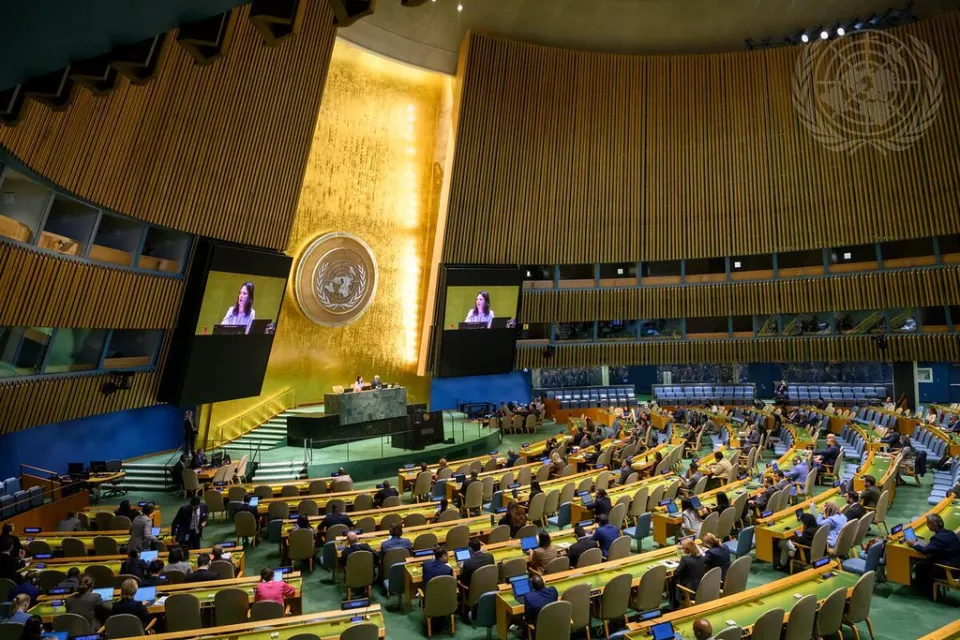Democracy Notes Explainer: What is democratic resilience?

The term ‘democratic resilience’ is increasingly common in the public lexicon, making prominent appearances in official policy documents, in academic and journalistic discourses, and in think tank and civil society reports. While everyone seems to agree that democratic resilience is of vital importance, especially in the current geopolitical climate, it is not always clear what individuals mean when they say it. More importantly, it remains unclear how to leverage democratic resilience in ways that offer new contributions to the longstanding question about how to mitigate democratic decline around the world.
- What is democratic resilience?
Multiple scholars posit that democratic resilience is, at its core, about the ability to ‘bounce back’ to a pre-existing state of ‘normality’ after a shock. Though some experts also include prevention and – more rarely – transformation or growth as part of the definition, the emphasis is largely on stability and the retention of at least a minimum core of democratic markers.
There is also agreement that democratic resilience depends on system-wide durability, or the resilience of each of a set of multiple, interdependent institutions and groups. Merkel refers to ‘levels of democratic resilience,’ which include constitutional powers, the party system, civil society and the political community. Others describe the ‘interrelated elements’ of institutions, instruments and actors. One particularly helpful framework groups the various elements into four constitutive levels: the macro-institutional level (the parliament, government and courts) as well as procedures (the electoral system), the intermediary level (political parties and the party system), the societal level (values, attitudes and behaviors of elites and citizens) and the level of the political community (feelings of belonging and identity). Still other scholars have focused on particular factors, such as judicial independence, past experience with democracy, levels of economic development or the role of panarchy, where the dynamics of national systems are shaped by the influence of sub- and supra-systems.
Recent scholarship indicates the ongoing evolution of the concept, with some interest in including elements of innovation in the understanding of democratic resilience. Some of these ideas are rooted in earlier work from Sisk and Bourbeau, who referenced ‘transformation’ in his understanding of resilience (rather than democratic resilience specifically). There is also new work to specify how democratic resilience works, thinking of its different roles as a capacity, a process or an output. A framework that asks a set of seven questions when evaluating democratic resilience is also a useful guidepost for further research and theorization.
- What are criticisms of the concept?
As attention to democratic resilience has spiked in recent years, it is clear that the concept requires more rigorous theorization. One meta-review of the literature revealed, for example, that less than 8 per cent of 748 academic publications between 1991 and 2022 included any meaningful elaboration of the term. Among those articles that do treat the concept more seriously, there are limitations: the overwhelming focus on a return to the status quo risks reinforcing pre-existing vulnerabilities, inequalities and injustice, and a preoccupation with an assumed state of normality risks overlooking the untapped potential of a ‘new normal.’
Some dominant definitions of democratic resilience treat crises as predictable and that position technocratic planning as adequate to mitigate most threats. In reality, flexibility may need to be more highly prioritized in the pursuit of resilience so that systems are able to quickly respond to scenarios that are, by and large, unforeseeable. Other critiques assert that most definitions of democratic resilience are based on idealized versions of human behavior, discounting the fact that people may act outside of what is considered optimal. Such an approach does not take sufficient account of human agency and the fact that decisions or actions considered ‘irrational’ may introduce important dynamism that is key not just for recovery but growth.
Despite its widespread recent uptake, an understanding of resilience that does not account for the dynamism of human agency and shortcomings in existing democratic systems may be inadequate for addressing the problems of facing democracies today.
-
Why is this concept so popular right now?
The concept of resilience has been used in the social sciences since the early 2000s (See Figure 1 below), and ‘democratic resilience’ first gained prominence in the middle of the 2010s. It has also proven an attractive model for researchers and policymakers seeking a remedy to the ongoing global democratic decline, particularly since the twin shocks of the Brexit referendum and the election of Donald Trump in 2016. This has only increased since the Covid-19 pandemic and the Russian invasion of Ukraine, which has prompted concerns about other attacks on democracies and popularized the need to ensure that democracies are equipped to be able to withstand such threats. This popularity may be a double-edged sword – as democratic resilience debates have overlapped with those around geopolitical competition, ‘hybrid threats’, and national security. But democratic resilience cannot be primarily oriented around protecting the system from outsiders – it must also strengthen democracy in its current form, for the benefit of all those who live in a given polity.
Figure 1: The use of ‘democratic resilience’ in academic literature, 1999-2021
Source: Josh Holloway & Rob Manwaring (2022): How well does ‘resilience’ apply to democracy? A systematic review, Contemporary Politics, DOI: 10.1080/13569775.2022.2069312
- What can be done?
Agreeing that the world is at some level of democratic decline, or recession, is one thing, but deciding what to do about it is quite another. Researchers have developed an extensive typology of forms of democratic decline and resistance, speaking of U-turns, J-turns, L-turns, onset and breakdown resilience and more, but translating this work into specific policy recommendations has proved more challenging.
A critical study of democratic resistance paradigms found that between 1994 and 2022, 90 per cent of the countries that experienced a democratic U-turn (or turnaround) failed to maintain that level of democracy for five years or more. Time is likely a determining factor here, as simply not enough of it has passed to distinguish between a genuine case of democratic resilience and a dead cat bounce. While it is not possible to project the dataset into the future, it could well be that democratic resilience is better measured over longer time periods. Democratization is not linear, and countries may experience declines – including serious ones – even as they make progress in the longer term.
That said, the proverbial baby should not be thrown out with the bathwater. Historical experience and quantitative data certainly have a role to play in forming our understanding of democratic resilience. Institutional design and technocratic policy are necessary, if insufficient components of democratic resilience. More than ever, there is now a need for more cross-country and cross-regional learning, marked by openness to hearing from other democracies (including those at all points on their democratic journeys), to sharing experiences, and providing mutually reinforcing support.
The European Center for Democratic Resilience proposed by European Commission President Ursula von der Leyen in her 2025 State of the Union could be such an entity, if correctly positioned as a forum for intergovernmental exchange and unencumbered, rigorous social science research. Indeed, there are already institutions established to support and advance democracy that fit such a mold, and with the convening power and analytical and technical expertise to map the path forward.
Opinions expressed in this commentary are those of the authors and do not necessarily represent the institutional position of International IDEA, its Board of Advisers or its Council of Member States.





